In the late summer of 2020 I started off a film challenge over on Dyxum. I planned to shoot a whole bunch of cameras including an OM camera. Now, my own OM-1, which is an early one, suffers from a capping shutter on 1/1000. On digging it out I was rather horrified to discover that the silvering on the pentaprism was flaking.
Scratch that idea. I knew my brother-in-law had a pair of OM2n cameras, so I asked him if I could borrow one… Unfortunately my timing was bad for local lockdowns. It ended up being over six months before he was able to pass a camera to me… But when he did, the aluminium case he handed over contained three Olympus OM-2n bodies.
So there it is, you wait 6 months for an OM-2n and then three come along at once.
What this has allowed me to do, is to shoot all three over the last 9 months. It has been very interesting to note the similarities and the differences
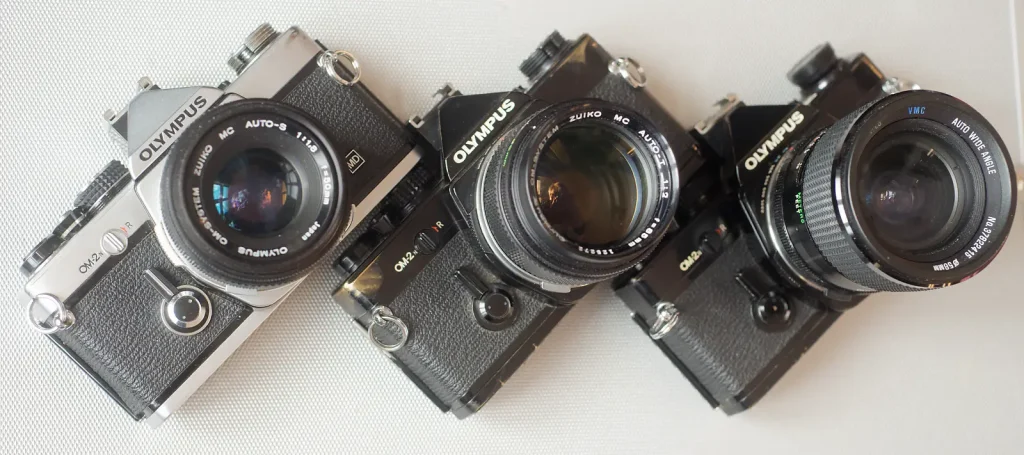
The OM story
Yoshihisa Maitani was a legendary designer at Olympus. He was involved with the design of the Pen, the Pen F, the XA and the Stylus. He is most famous for the OM system which grew out of a concept for a modular system. A set of components to perform just about any photographic task. An early design was the MDN (which is supposed to have stood for Maitani/Dark box/Normal) – a fully modular 35mm Hasselblad-style camera (sometimes referred to later as the OM-X). In the end Olympus went for something a less modular than Yoshihisa Maitani originally envisaged.
The M-1 premiered at Photokina in 1972. It was tiny – and it was very pretty. In my opinion just about the best looking camera ever (I’ve always had a soft spot for ‘pointy-topped’ pentaprisms). Aesthetics are very much down to the individual, but if you disagree with me, then I’m sorry – you are wrong…
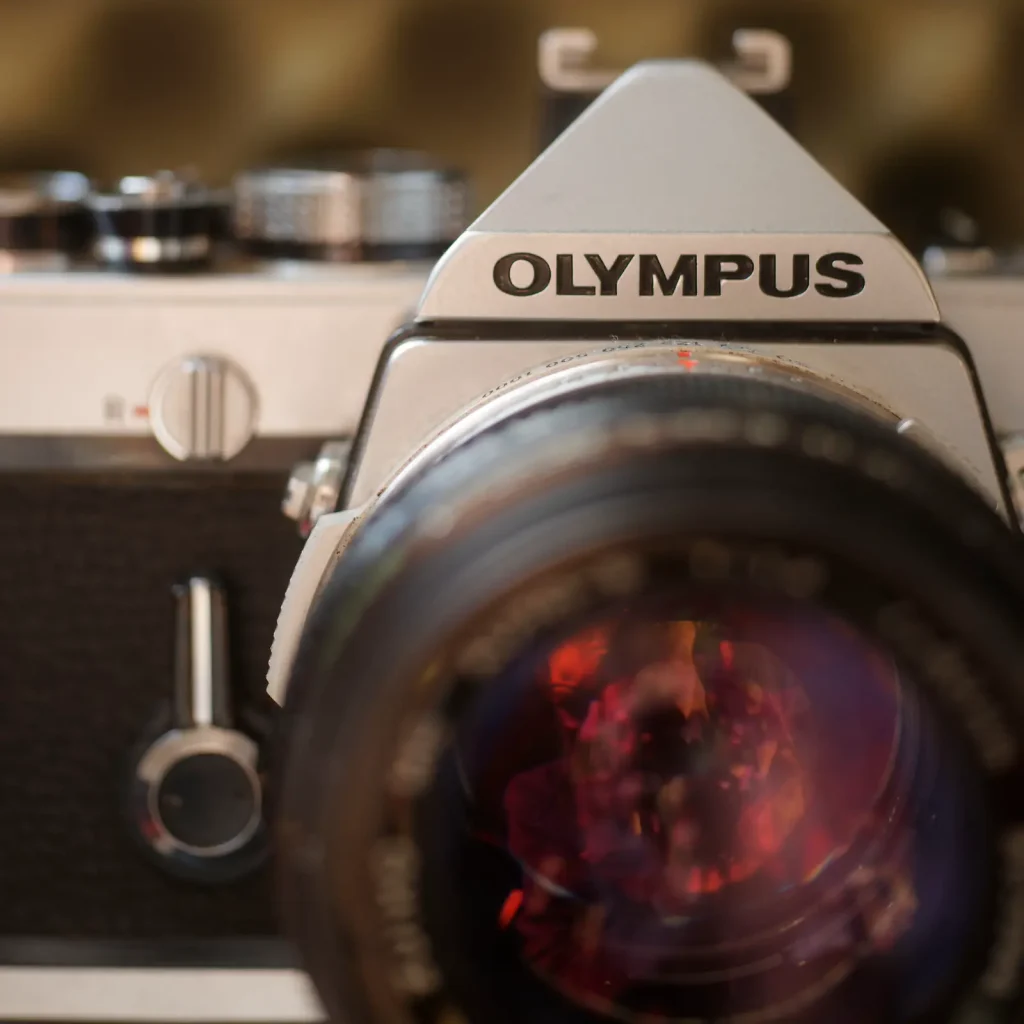
Name change
Leica objected to the name. My understanding is that you can’t trademark a letter or a number. Whether there were firm legal grounds or not, Olympus changed the name of their new baby. Fifty thousand M-1 cameras (and a whole bunch of lenses and other system components) had already been manufactured. Those Original M-1 bodies and lenses are quite sought after.
By early 1973 the cameras coming off the production lines were all bearing an OM-1 top-plate. In the first few months of OM-1 production various improvements were made under the skin. The CdS photocells for metering were improved and the wiring to them switched from red-back-green to red-black-pink. It gained a revised back, with a larger pressure plate. My early OM-1, manufactured in April 1973, still has the green wiring and small pressure plate of the original cameras.
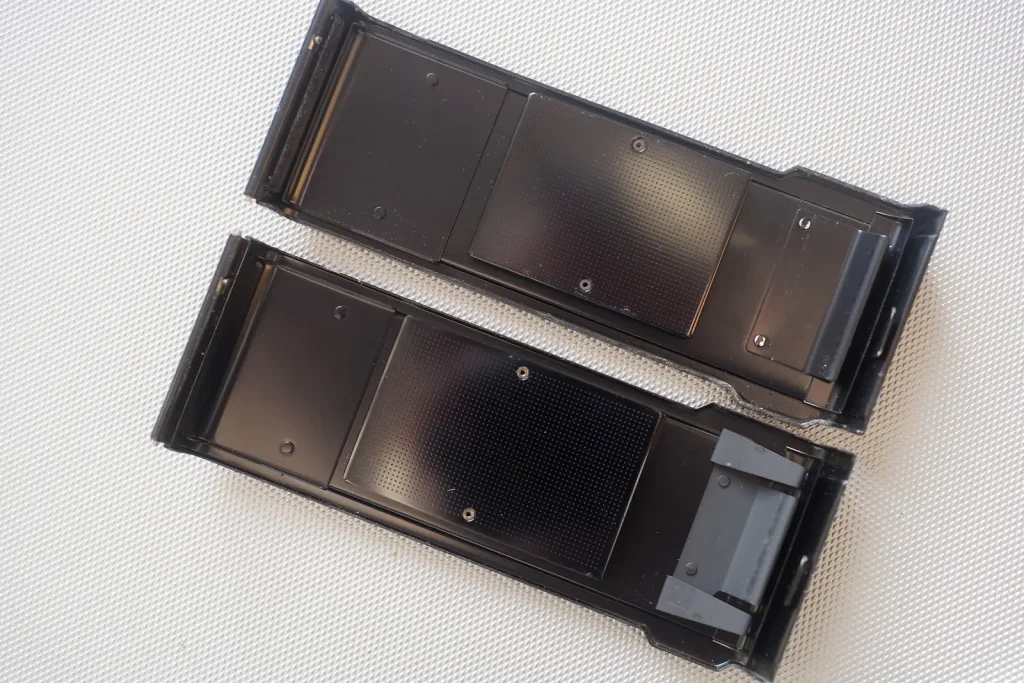
Although the OM series was in production for a long time, there were some changes. The original cameras couldn’t take an auto-winder or motor-drive and revised models feature a different bottom-plate and a little [MD] badge on the left side of the front of the camera. In 1979 both the manual and automatic models gained an ‘n’ suffix. The new variant featured a redesigned wind-on lever and extra integration when used with a T series flash.
Design choices
The original OM cameras had some design features that went against convention at the time.
The switch to rewind the film is on the front of the camera, rather than on the base. This is handy if you are using an auto-winder or motor-drive that would cover the base. It suggests that motor-drives were designed in early on, even if the actual attachments were missing from the early cameras.
The shutter speed selector is around the (wide and deep) lens mount. This is a bit of a point of contention between individual photographers. On the plus side, the tabs allow you to have a clear idea of what end of the shutter speed range the camera is set to. The right-hand tab is high for high speeds and low for low ones; Useful when you don’t have any other indication in the viewfinder.
The lens release button is on the lens rather than on the camera. This allows for single handed lens changes as the button can be held down and the lens rotated on the mount at the same time.
Quirks
Off the camera, OM system lenses sit with their diaphragms fully open. They are shut down by the camera moving the actuator against the spring. This is against the usual practice for bayonet mounts. It is more common to have the resting position for the lens with the aperture shut down.
The other system that operates the same automatic diaphragm method is the m42 screw mount. Both these mounts commonly feature stop down switches on the lens, but it makes it harder to control the precise level of stop-down from the camera body. Not impossible, as Olympus had program modes on later models, but not as precise as you can achieve with the alternative method.
Trade-offs
The deep mount allows the use of a huge mirror. This also means that wide lenses have to be more retro-focal.
The shutter used is a relatively conventional horizontal travel cloth unit which limits flash synch to about 1/60. This may have been done to achieve the diminutive dimensions of the OM cameras. Compact versions of the Copal vertical travel shutter and its Seiko equivalent were some years off.
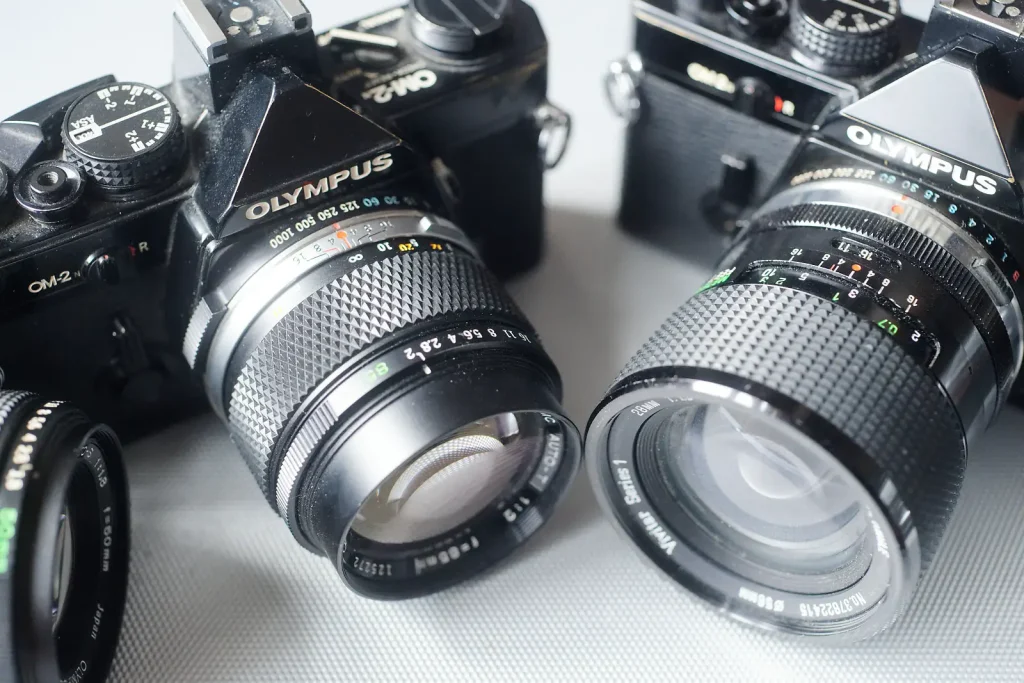
OM-2 time
The OM-2 builds on what the OM-1 does. The OM-2 has an electronic shutter, and (unusually) it has no manual speed in case the battery dies. So without a battery the shutter will just not fire. It also loses the mirror lock-up found on the OM-1.
Metering
The power switch has taken on extra functions. It includes a battery check and allows us to choose between manual and automatic exposure. The switch actually gives us a different display based on that choice. We see either the OM-1 needle with sighting marks and plus and minus, or a full miniature range of shutter speeds. The speed shown in the viewfinder is just indicative and may be different from what the camera uses. The camera actually decides exposure while the picture is being taken,using silicon photocells to read the light reflected off the first shutter curtain once the mirror has lifted or off the film itself. If you are using the right flashgun the camera will even measure exposure during the flash and cut it off once the light is sufficient.
Exposure compensation
The OM-2 also makes better use of the top-plate ISO dial from the OM-1, adding exposure compensation by turning the dial with two stops plus or minus marked on the dial. Unfortunately the exposure compensation dial is not a sly way of being able to push film to 3200 ISO, it is just a way of adjusting the ISO value to cater for tricky exposure situations while giving a clear indication to the photographer that compensation is set; you can only set two stops less exposure when using an ISO 400 film as the ISO 1600 limit is still in place.
What that off-the-film during-the-exposure metering won’t get you is an exposure lock (so you are limited to that exposure compensation dial or switching to manual).
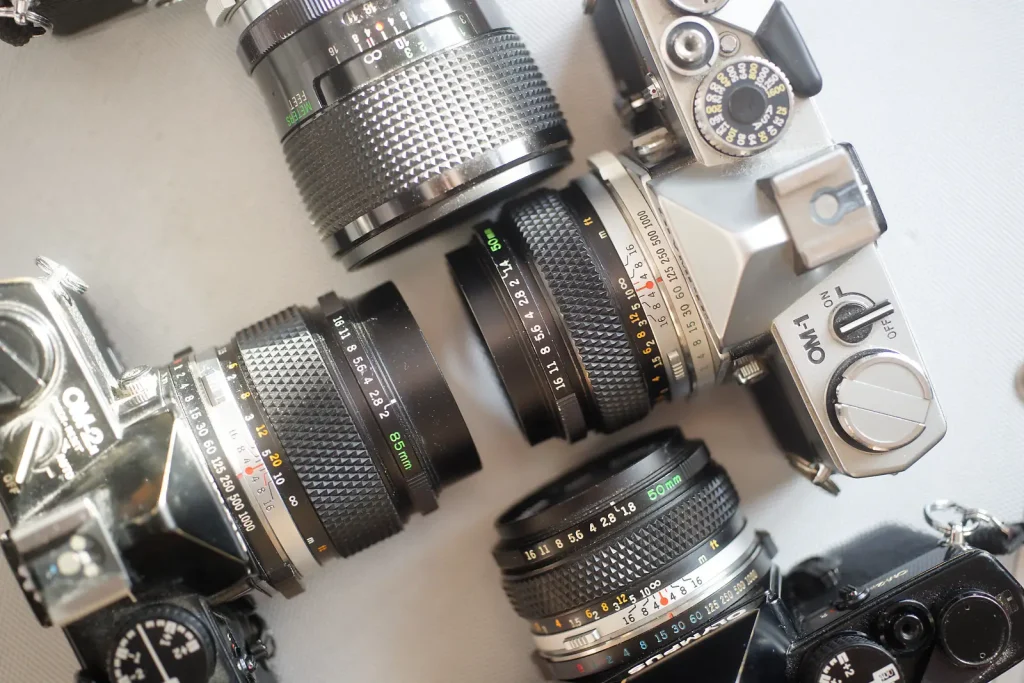
What is not so good about the OM-1 and OM-2 cameras
The information shown in the viewfinder is minimal.
Without a battery, the OM-2 is unable to take pictures.
The ISO range of the meter is limited.
The battery compartment has a very shallow slot and tends to show signs of scratches and wear where a coin has slipped from the slot.
Despite not needing a shutter speed dial on the top plate, the OM-1 uses quite a large dial for just setting ISO speed.
The switch to turn the meter on and off takes up quite a lot of space over on the left of the top-plate while the meter and ASA setting dial are located on the other side of the pentaprism.
There is no shutter lock.
So what is so special?
It is a remarkably big and comprehensive system. The camera bodies are remarkably small. There are winders, backs, bellows and attachments to fit any need. From a very shallow point of view, it is noticeable that quite modest sized lenses look somehow more impressive when mounted on such a tiny body.
The Zuiko primes are really nice.
The viewfinder
There is no interchangeable finder, but there are easily fitted specialist focusing screens and angle-finders to make that a non-issue. And why would you want to change a finder that provided such a huge, bright and unobstructed view?
Because that viewfinder is amazing. That the world should look so big through such a small bodied camera is quite something. You don’t need to open up the top plate to know that the prism is not unusually large, it simply couldn’t be to fit under the close-fitted pentaprism hump. I took a crocked OM-1 to bits to try to work it out – the only exceptional thing I could find with the pentaprism was the lower surface, which is convex, providing its own condenser (also a feature of the pentaprism for the Pentax MX). I suspect the secret is in the eyepiece.
The viewfinder is so good that you forgive the camera for the lack of information it gives you about settings for the camera.
In practice
The OMs are is a great little cameras to shoot with. I have access to an autowinder, but it seems a shame to bulk up these wonderful examples of miniature cameras. The three cameras I have been shooting with are pretty much identical in features and interestingly, they all display the same slight light leak. This darkening of the sprocket holes (not intruding onto the negative image) at the bottom centre of each frame suggests that some light may be getting in from the viewfinder. It matters not at all.
Some form of exposure lock would be nice, and you might think that a simple button to lock the shutter to the speed shown in the viewfinder and use that value instead of the one metered from the film plane would not have been that hard to implement. Olympus stuck with the exposure compensation dial, so the OM-2 shares that particular annoyance with the Pentax ME.
I forgive it though. I’d forgive it far more failings than its tiny body could possibly contain, simply for the wide open spaces of that viewfinder.
Pictures!
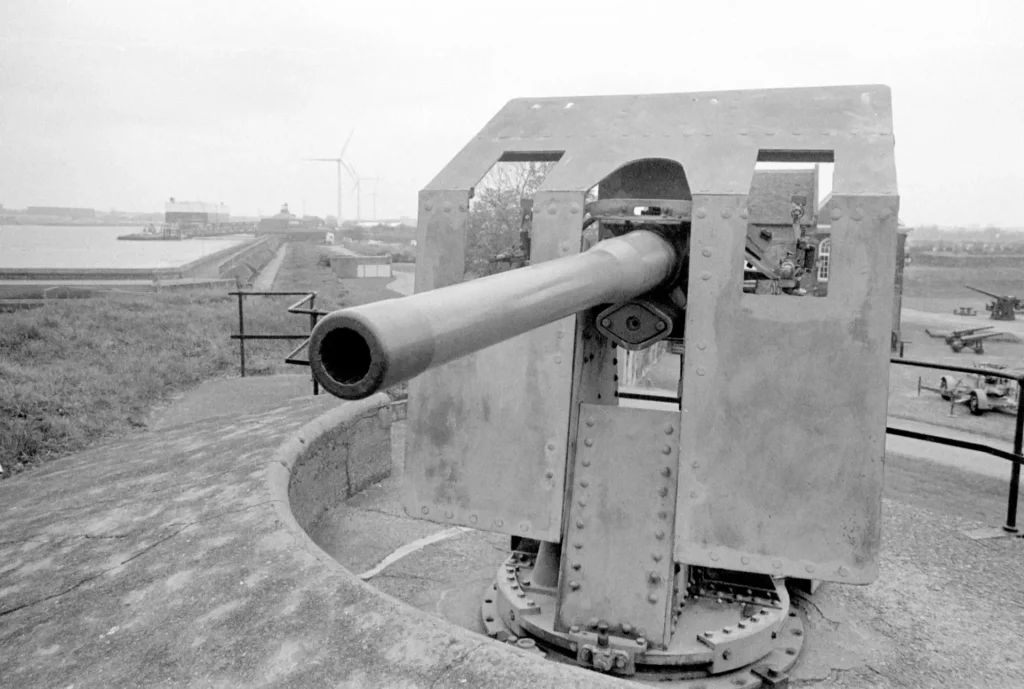


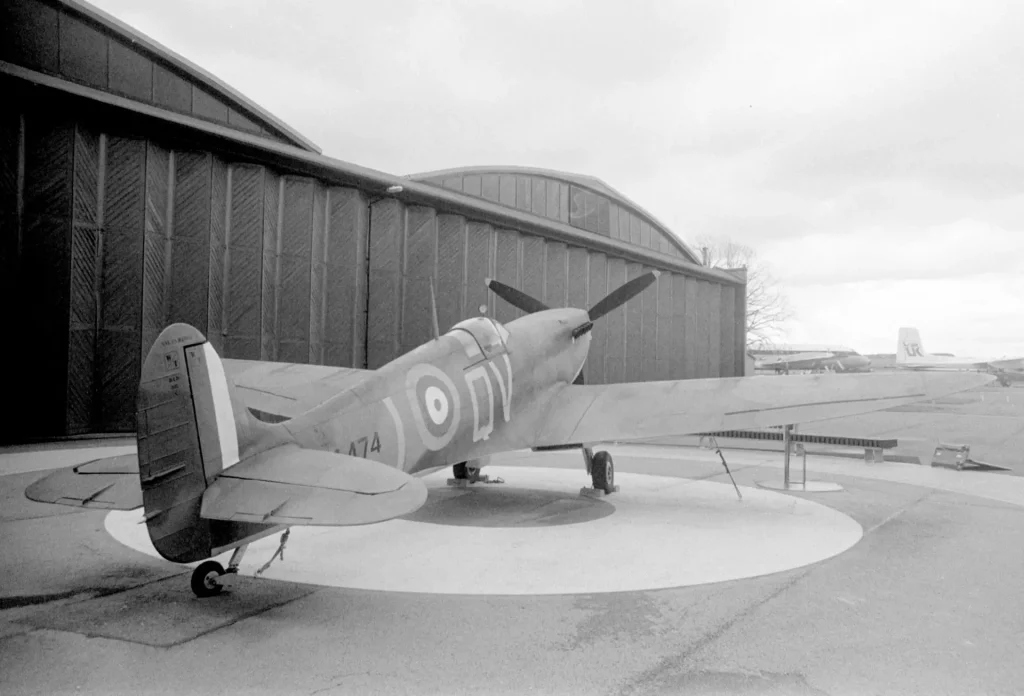
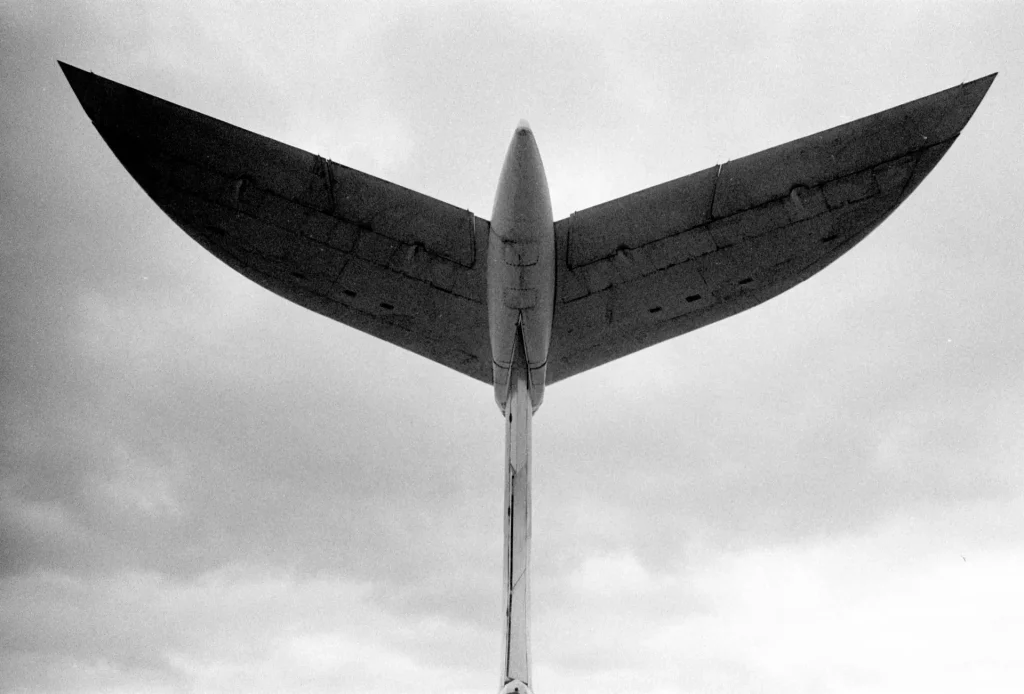

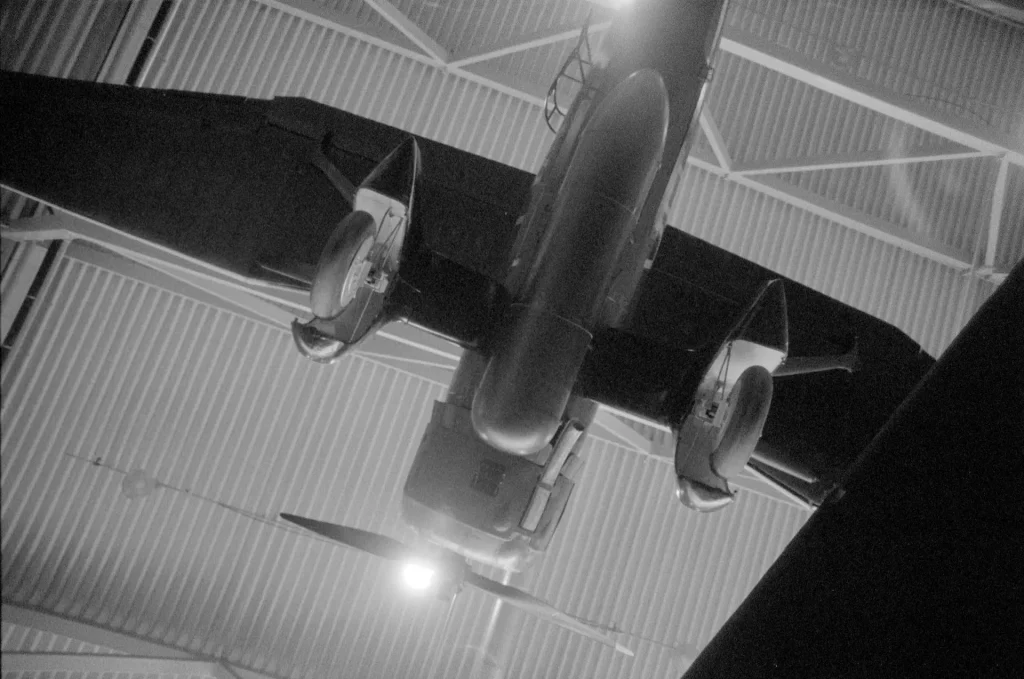
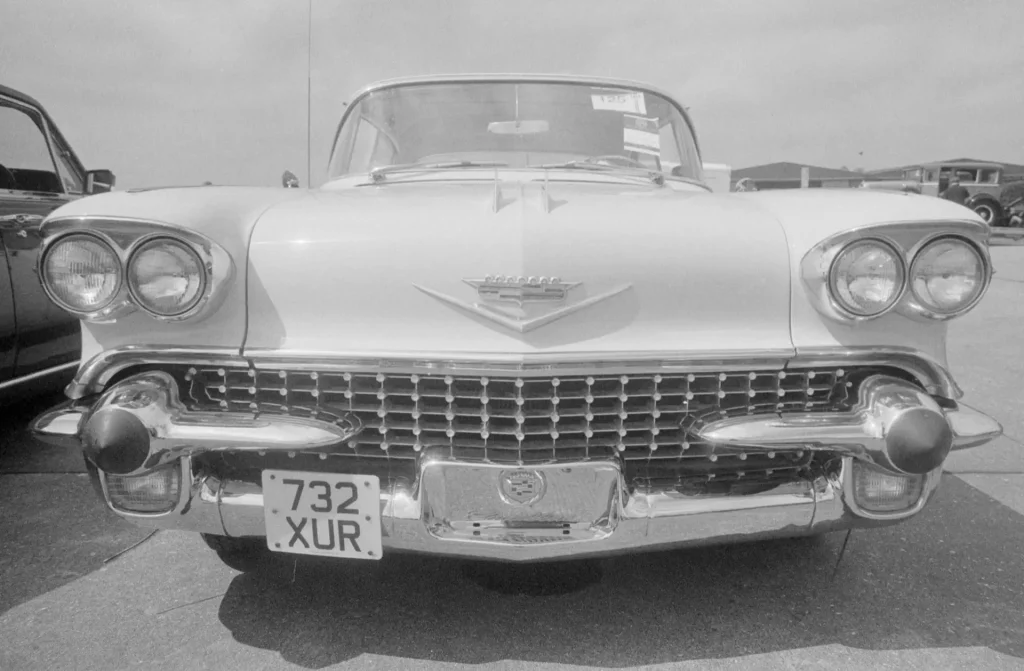


What Olympus did next
In the auto-only boom that followed the release of the Pentax ME, Olympus produced their own auto-only automatic (although they also supplied a manual adapter). This was the first in a range of consumer cameras that only used certain parts of the OM system. These double digit cameras, starting with the OM-10 are very capable but they are not in the same class as the single digit models.
A major revamp
The second wave of top OM models started with the introduction of the OM-3 and OM-4 in 1983. These were updated versions, which featured LCD readouts in the viewfinder, shadow and highlight metering options and a top shutter speed of 1/2000. The OM-4 had the electronic version of the shutter, with fallback mechanical speeds of B and 1/60. The OM-3 was only in production for 3 years and was outlived by the OM-1n, which stayed in production and was a good bit cheaper.
A year after the introduction of the OM-4 the Olympus OM-2 got a refresh. It got the same shutter as the OM-4, but without the 1/2000 top speed. It got LCD readouts and extra exposure modes to cope with spot metering and fully programmed exposure.
Olympus dabbled with autofocus for the OM system. The OM-30 had electronic focusing aids and would autofocus with dedicated lenses. As far as AF was concerned, you get the impression their hearts were not in it. AF needs to be grafted on and so much of the appeal of the OM system was that it was all designed from the ground up.
The manual focus OM cameras were among the last analogue cameras in production.
Share this post:
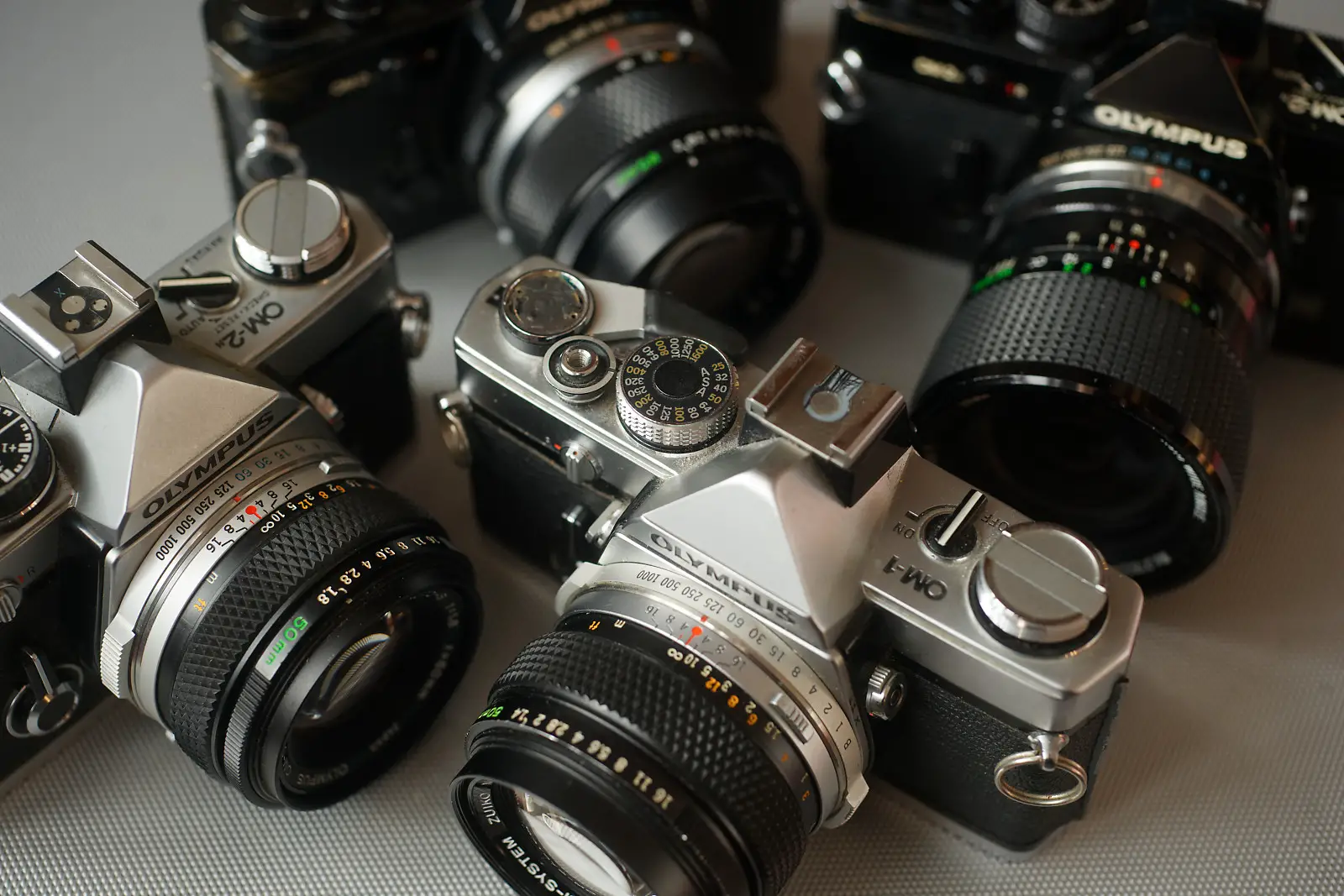








Comments
Roeland van Basten Batenburg on Olympus OM-2n – You Wait 6 Months For An OM And 3 Come Along – By Bob Janes
Comment posted: 11/02/2022
Comment posted: 11/02/2022
Max on Olympus OM-2n – You Wait 6 Months For An OM And 3 Come Along – By Bob Janes
Comment posted: 11/02/2022
Comment posted: 11/02/2022
Comment posted: 11/02/2022
Dan Castelli on Olympus OM-2n – You Wait 6 Months For An OM And 3 Come Along – By Bob Janes
Comment posted: 11/02/2022
Press photographers are brutal on their equipment, and the OM-1’s soon earned a reputation of being poorly built and a high failure rate. It was undeserved, and later models (OM-4T) could take a real beating.
Most Olympus SLR lenses are 1st rate.
The Nikkormat series had the shutter speed dial nested at the base of the lens mount and nobody complained.
Anyone looking to get into 35mm film photography should look into the OM system.
Comment posted: 11/02/2022
Jonathan on Olympus OM-2n – You Wait 6 Months For An OM And 3 Come Along – By Bob Janes
Comment posted: 12/02/2022
Comment posted: 12/02/2022
Comment posted: 12/02/2022
davesurrey on Olympus OM-2n – You Wait 6 Months For An OM And 3 Come Along – By Bob Janes
Comment posted: 12/02/2022
Another great article for which thanks.
After a brief dalliance with a Nikkormat which got stolen I bought an OM1 and then an OM2 and eventually added a large selection of Zuiko lenses. They served me well for many years but then I sold it all to go digital. Now that I am back into film photography I have bought another OM1n and 2n and remember just how good these cameras are.
The light leak problem is likely due to the viewfinder foam rotting. Some even say there is no need to replace it. If you are unaware have a look at: http://olympus.dementix.org/Hardware/tutorials/FoamRemoval/index.html
Comment posted: 12/02/2022
Tariq on Olympus OM-2n – You Wait 6 Months For An OM And 3 Come Along – By Bob Janes
Comment posted: 13/02/2022
Martin on Olympus OM-2n – You Wait 6 Months For An OM And 3 Come Along – By Bob Janes
Comment posted: 13/02/2022
David Hill on Olympus OM-2n – You Wait 6 Months For An OM And 3 Come Along – By Bob Janes
Comment posted: 14/02/2022
The early 40mm (pancake) was poor; this was redeveloped into a lovely lens.
The 180 and 250 are very rare
The 'consumer' primes (f/2.8, f/3.5, etc) were good lenses but not on par with the f/2's
Comment posted: 14/02/2022
Shubroto Bhattacharjee on Olympus OM-2n – You Wait 6 Months For An OM And 3 Come Along – By Bob Janes
Comment posted: 06/01/2023
That wide-open aperture on default meant that every OM lens featured depth-of-field preview.
The OM4-Ti was, if memory serves, the first to allow FP pulsed-flash exposure at shutter speeds higher than the X-sync speed.
The M in the OM model numbers was, of course, for Maitani; Olympus had to add the O prefix after Leica made noises.
Love your penmanship!
David on Olympus OM-2n – You Wait 6 Months For An OM And 3 Come Along – By Bob Janes
Comment posted: 07/01/2023
Comment posted: 07/01/2023